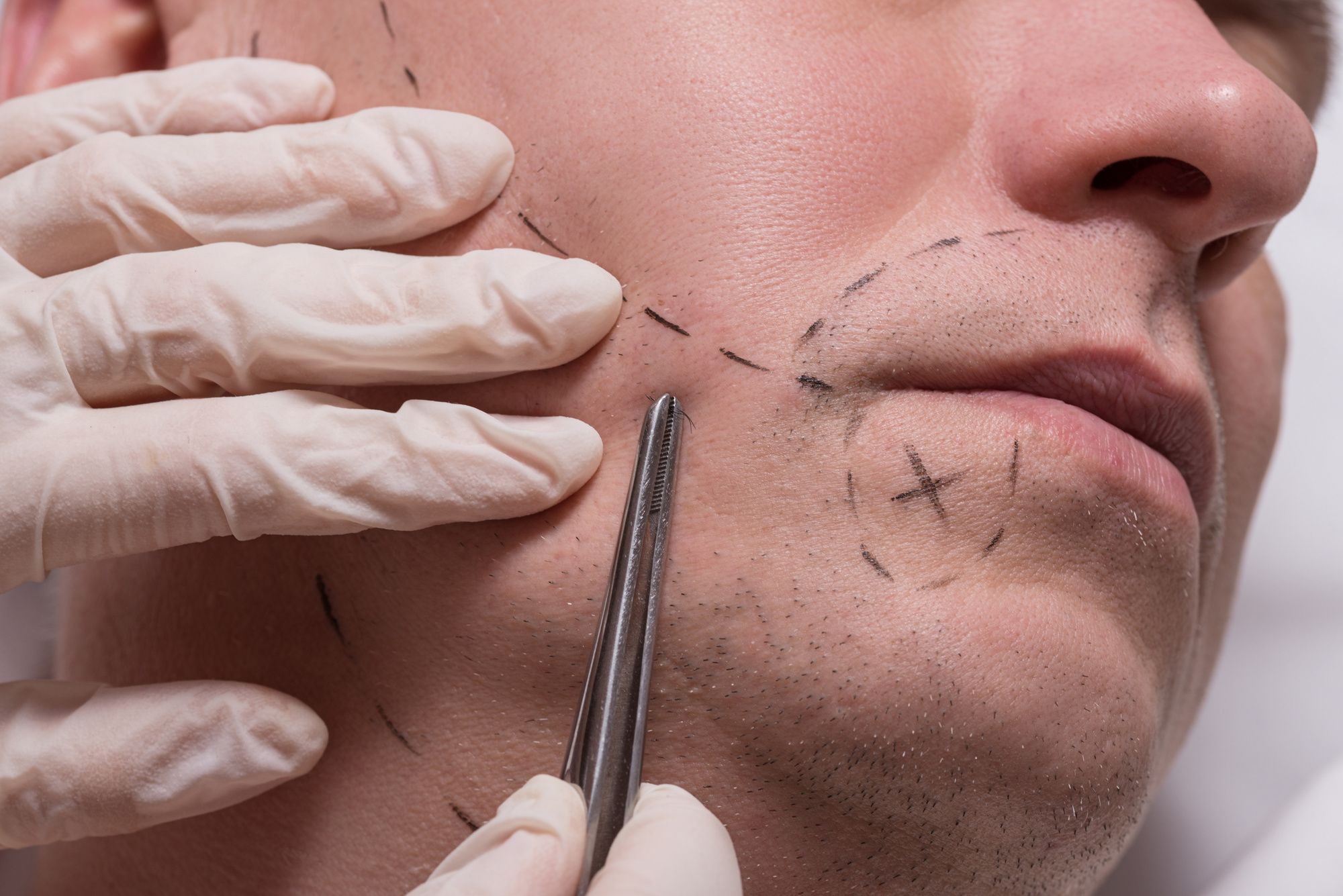Table of Contents
Beard transplants have become popular among men looking to achieve a fuller and more defined facial hair appearance. The motivations behind this procedure vary, from personal aesthetics to addressing genetic limitations. It’s crucial to have a clear understanding of the process involved.
In a city renowned for its skilled specialists, considering a beard transplant Chicago becomes a compelling option for many. The combination of advanced techniques and experienced professionals ensures that each patient receives personalized care tailored to their unique needs and desired outcomes.
Read on to discover every step of the beard transplant process, ensuring you’re fully informed and prepared for this transformative experience.
Pre-Operative Consultation
Before the beard transplant process begins, a thorough pre-operative consultation is vital. It’s a tailored interaction that allows for an in-depth exploration of the patient’s needs, concerns, and expected outcomes, laying the groundwork for the procedure.
The following are essential aspects of the consultation:
- Assessment: The initial stage comprehensively analyzes the patient’s facial structure and hair characteristics. The surgeon evaluates the hair density, growth patterns, and overall skin health. Causes of beard loss specific to the individual are also addressed, ensuring a comprehensive understanding of the patient’s unique situation.
- Discussion: At this juncture, an open dialogue occurs between the patient and the surgeon. Expectations, desired outcomes, and any underlying concerns are brought to the forefront. The surgeon provides insights, dispels myths, and sets realistic anticipations aligned with the patient’s aesthetic goals and medical safety.
- Personalized plan: Based on the assessment and discussions, the surgeon formulates a bespoke action plan based on the evaluation and discussions. Every detail, from the selection of donor hair and anticipated graft numbers to the procedural steps and the expected recovery trajectory, is meticulously outlined to cater to the individual’s needs.
The pre-operative consultation underscores the significance of clear communication and personalized planning, setting a positive tone for the upcoming procedure.
Selection Of Donor Hair
The phase of selecting donor hair is crucial in the beard transplant process. It’s not just a technical step but a carefully considered decision that significantly impacts the procedure’s aesthetics and success. The donor hair’s quality, texture, and color should seamlessly blend with the existing facial hair to achieve a natural and cohesive look.
Here are the essential components of this phase:
- Identification: This step involves selecting the optimal area from which the hair will be extracted. Typically, hair from the back of the head is preferred due to its resilience and similarity in texture to facial hair. The surgeon assesses the quality and density to ensure a successful transplant.
- Analysis: During this stage, tests are performed on the potential donor hair to ascertain its health, strength, and viability for transplantation. Factors like compatibility, density, and resistance to balding play a pivotal role in this analytical stage.
- Extraction technique: The method used to extract the donor hair is chosen based on the patient’s specific needs and the hair characteristics. Techniques vary, each with its advantages, and aim to minimize scarring and ensure the extracted follicles remain healthy and viable.
This stage is intrinsic to the process’s success, setting the tone for the transplant’s aesthetic and functional outcomes. The meticulous attention to the compatibility and quality of the donor’s hair underscores the procedure’s personalized and intricate nature.
The Transplant Procedure
The heart of the transformation lies in the transplant procedure itself. This is where the meticulous planning and preparations culminate into action. Precision, skill, and technology intertwine to facilitate the transition of hair follicles from the donor site to the recipient area, marking the tangible steps toward achieving the desired beard fullness and contour.
Below are the detailed steps involved in this pivotal phase:
- Follicular unit extraction (FUE): This technique involves extracting individual hair follicles from the donor area. FUE is favored for its precision and minimal invasiveness, ensuring that the donor site heals quickly and with negligible scarring.
- Preparation of the recipient site: The surgeon prepares the beard area, designing the outline and density to ensure a natural and aesthetically pleasing result. Every incision is made with precision to mirror the natural growth pattern of a full beard.
- Implantation: The extracted hair follicles are then carefully implanted into the prepared recipient site. Each follicle is placed precisely to ensure the direction, angle, and density align with the natural growth pattern and the patient’s desired outcome.
- Post-procedure care: Immediately after the surgery, the surgeon applies dressings and provides detailed instructions to minimize infection risk, manage discomfort, and facilitate optimal healing and growth of the transplanted hair.
Each step is executed precisely, underscoring the tailored approach adopted to meet each patient’s unique needs and expectations. The outcome isn’t just a fuller beard but a testimony to the intricate and personalized process that defines the journey of a beard transplant.
Achieving Desired Results
After the meticulous procedure, the journey to witnessing tangible, aesthetically pleasing results begins. It’s a phase characterized by patience and adherence to post-operative care instructions. The transformation isn’t instantaneous; it’s a gradual process where the newly transplanted follicles adapt, grow, and eventually blend seamlessly with the existing facial hair to unveil the anticipated beard fullness and contour.
The following key points highlight the journey to achieving the desired results:
- Growth phase: Approximately three to four months post-operation, patients can start noticing new hair growth. This marks the beginning of the transformation, though patience is essential, as the full aesthetic results are yet to unfold.
- Shedding: It’s common for the newly transplanted hair to shed initially. This shouldn’t be a cause for alarm, as it’s a natural part of the process. The roots remain intact, and new, stronger hair will grow in place.
- Full results: Between eight to twelve months, the transplanted hair follicles would have fully adapted, and patients can witness the full, desired results. The beard appears fuller, with enhanced density and a natural look.
This period requires patience and adherence to the post-operative guidelines provided. Every stage, from the initial growth to the unveiling of the full, dense beard, is integral to the overall success of the beard transplant. The waiting period allows the body to heal and for the newly transplanted hair follicles to adapt and flourish, leading to enduring and aesthetically pleasing results.
Conclusion
Though intricate, the journey to a fuller, well-defined beard is attainable. From consultation to witnessing the final aesthetic transformation, each phase is customized to meet each individual’s unique needs and expectations. To embark on this personalized journey and experience the transformative fusion of science, artistry, and precision, consult a specialist who will guide you through every detail, ensuring clarity, confidence, and excitement as you reveal your refined appearance.
How To Change Curly Hair To Straight Hair Naturally Permanently?




